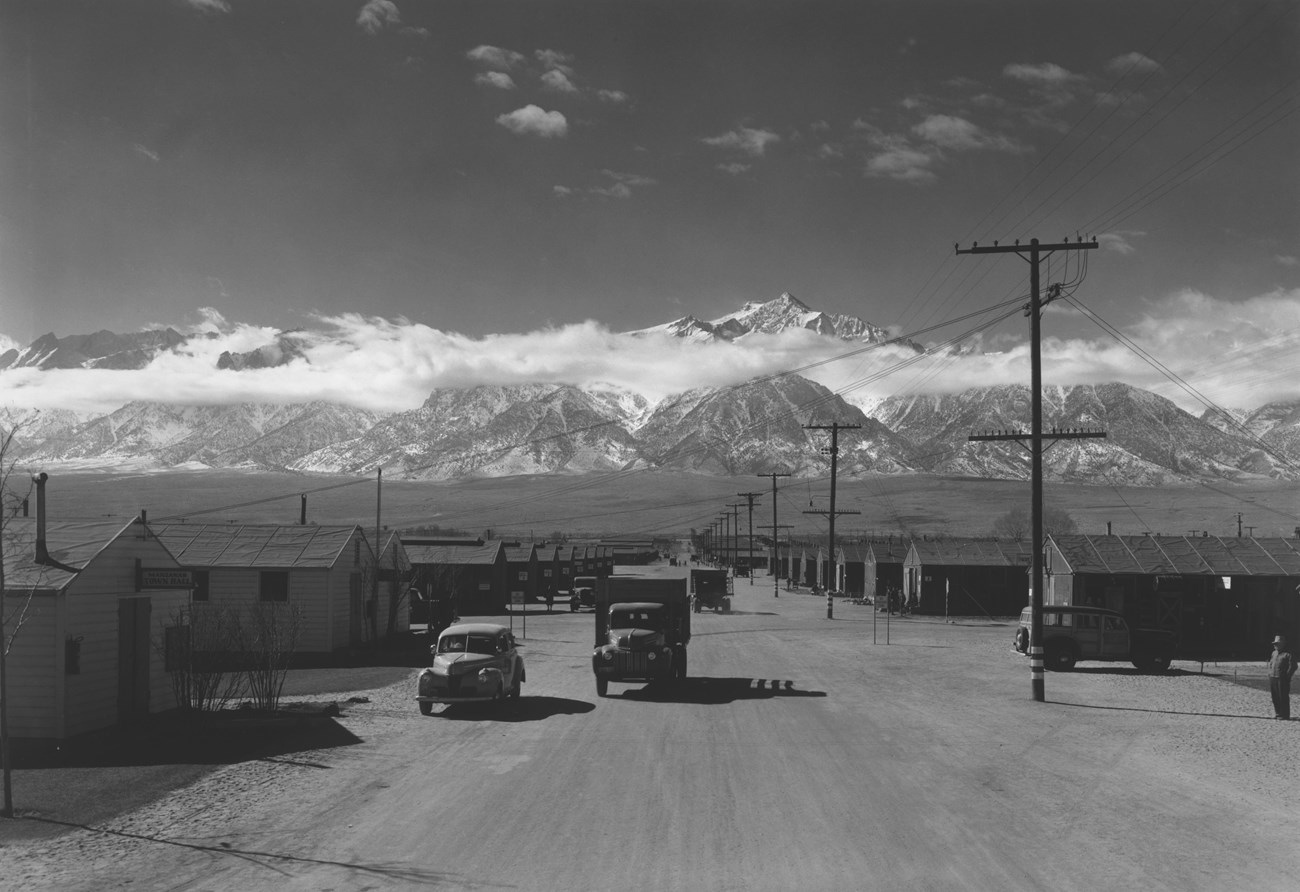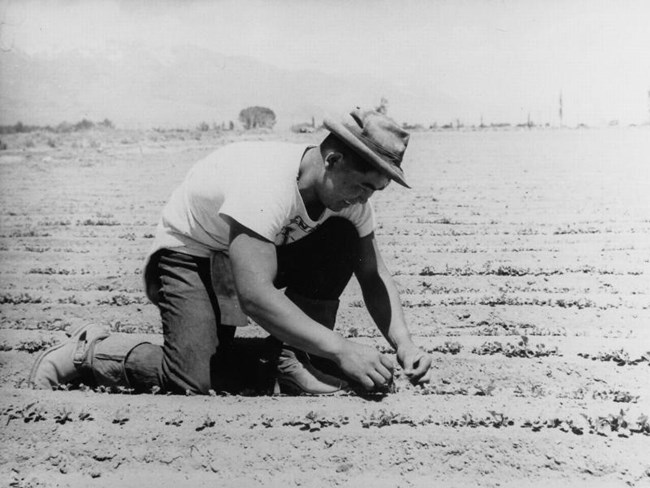Last updated: September 26, 2024
Article
A Taste of Home in a Hostile Place

Bancroft Library, UC Berkeley
The image of a national park in our mind’s eye probably doesn’t give form to an orchard of fruit trees. However, it is a little-known fact that one third of all the US national parks have old fruit trees. The trees bear witness to our use of the land before the national parks, and no less is the case at Manzanar National Historic Site where nearly 100 year-old fruit trees date from the early agricultural settlement of the Owens Valley in California.
The Manzanar fruit trees may seem somewhat “everyday” and ordinary, but they are in fact remarkable as some of the few remaining historic features of a War Relocation Center that existed during World War II. To Japanese Americans incarcerated at Manzanar in the early days of 1942, the camp orchards provided some of the few fresh foods to augment MREs (Meals Ready to Eat) and offered a precious taste of home.
Today, Manzanar National Historic Site is the best-preserved Japanese American War Relocation Center operated by the US federal government between 1942 and 1945. The Japanese attack on Pearl Harbor during World War II led to President Roosevelt’s declaration of Executive Order 9066, resulting in the incarceration of Japanese Americans, many of whom were US citizens. In an attempt to protect national security, 100,000 Japanese Americans were transported to ten hastily-built War Relocation Centers in seven states for the remainder of the war.

Photograph by Ansel Adams. Library of Congress.

Photograph by Francis Stewart / Manazanar National Historic Site
The site's conditions of confinement with guard towers, cramped conditions, bitter cold, searing heat, and sandstorms may have been temporarily relieved by the sweet succulence of fruit. The familiar taste of the fresh harvest may have momentarily transported some incarcerees back to their lives of freedom before the war, when many families worked the lands along the Pacific Coast, raising strawberries, roses, and cut flowers.
During the three years of their confinement, in a remarkable demonstration of the human spirit, incarcerees transformed the inhospitable desert of the site with Japanese gardens created from salvaged rocks and native plants and built a reservoir and irrigation channels to return water to the barren soil.
Today, the National Park Service is partially restoring the landscape to its appearance during World War II. Two barracks, a mess hall, the auditorium and a guard tower have been restored, along with numerous Japanese gardens and cultivated areas. Sixty-three historic fruit trees within the four surviving orchard areas have been rejuvenated, and new replacement trees are being planted to fill in the gaps of missing trees.

NPS
This landscape is a monument to both human failing and remarkable endeavor. Out of more than 10,000 incarcerees, 146 died at Manzanar. Five graves remain there. If you visit the park in early fall and stop by the visitor center, don’t be surprised to find a box of freshly-harvested Manzanar pears on the counter, a familiar taste of home in a most unfamiliar place.

